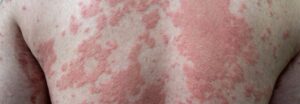Award winning dermatology service, with over 20 years of experience
Short waiting lists, on some occasions offering same week appointments
Safe environment, in Care Quality Commission approved facilities
TREATMENTS FOR SPIDER VEINS & THREAD VEINS:
SPIDER VEIN AND THREAD VEIN removal CANTERBURY
Spider veins, also known as thread veins, are the nickname that is given to small red or blue tinged broken veins and blood vessels that lie just under the surface of the skin and appear as fine red, or sometimes purple, wiggly lines. Spider veins can appear anywhere on the body, including the face and as the name suggests, spider veins can come in a variety of shapes and sizes. Spider veins are not the same as varicose veins, which are painful and look thicker and more cord like. Spider veins can appear on the skin for many reasons, from exposure to the sun, hormonal changes, age, pregnancy, puberty, the menopause, injury to the skin, obesity, weight gain and certain medications.
Spider veins rarely pose a serious health problem, but if associated with Rosacea, they can sometimes be itchy, and uncomfortable or make the skin feel sensitive. Although spider veins aren’t dangerous, they can tend to become larger and increase in number over time.
THREAD VEIN and FACIAL SPIDER VEIN REMOVAL
Spider veins in the face can be treated with lasers and IPL. Laser/IPLs work by producing powerful light. If the wavelength of the system is matched to a target colour (such as the red cells in blood), the energy of the laser/IPL is absorbed specifically by that target and minimally by the surrounding tissues. The laser/IPLs deliver a series of focused energy pulses generating heat for very short periods of time; this closes down the thread veins, without perforating them. The collapsed veins are gradually dissolved and removed by the body’s immune system over several weeks following the treatment.
The laser/IPL is fired in short bursts at the thread veins. This feels like a hot pin-prick on the skin. During treatment the skin is cooled, which reduces this stinging sensation and a cooling gel is applied afterwards. The area treated may feel hot for 15 minutes or so after treatment and most patients will experience skin redness over the treated area which will fade over the next hour or so. Larger vessels treated with lasers will be immediately less visible than before the treatment. Fine facial veins can simply disappear at the time of treatment. There may be some redness and swelling or light crusting, this usually subsides within a few days.
The number of treatments needed, will depend on the site and the extent of the affected area. Small veins on the face normally disperse just after 1-2 laser treatments at 6 week intervals. IPL may take 4 sessions at 2 week intervals.
Lasers work well on superficial spider veins whereas, intense pulsed light devices target a number of cosmetic concerns such as brown pigmentation and small blood vessels simultaneously. Patients see gradual but very noticeable improvements with complexion blending and brightening achieving photo rejuvenation of the skin.
At the Canterbury Skin and Laser Clinic, we are able to offer both treatment modalities in order to achieve the best results. The appropriate use of either laser or IPL will be advised at the time of the consultation.
VASCULAR LESIONS – RED DOTS, HAEMANGIOMAS, CAMPBELL DE MORGAN SPOTS, SPIDER NAEVUS ETC
These are common skin growths that can appear on most areas of the body.
Generally, these are mainly of cosmetic concern, but can occasionally catch and/or bleed if caught. In addition, if the lesion is actively changing in size or shape or develops pigmentation within part of it, please check with your GP or dermatologist in case something more sinister is underlying it.
The causes of different haemangiomas are not all known, but they can occasionally be triggered by trauma in some cases, and the tendency to developing them can be inherited in others. They can be effectively treated in most cases with one of our blood vessel targeting lasers. It usually only takes 1-2 sessions to have them removed. A large number of dots can potentially be treated in a single session. Very occasionally it is advised to remove certain types of haemangiomas surgically.
Following treatment, they will generally go crusty over the following few days. The crust commonly falls off within 2 weeks, and can potentially have gone underneath, unless further treatment is required for any residual haemangioma present at this point. We would usually recommend waiting at least 4 – 6 weeks between treatments to assess the results before treating it again if needed.
REQUEST A CALL BACK
Please fill in this form and one of our team will give you a call back to arrange a consultation with one of our expert dermatologists.

What our Customers Say
WHY CHOOSE CANTERBURY SKIN AND LASER CLINIC?
Here at Kent’s leading private skin and laser clinic, our experts are specialists in all aspects of dermatology, skin cancer, anti-ageing and beauty treatments. We are one of the few skin clinics in the UK where all medical consultations and treatments are provided by specialist doctors with Dermatology experience and laser training.
Canterbury Skin and Laser Clinic is regulated by the Care Quality Commission, ensuring the best level of treatment is provided to you in a safe environment. Our Clinical Lead Dr Mark Hudson-Peacock is a member of the British Association of Dermatologists, the British Laser Medical Association, the British Hair and Nail Society, the European Academy of Dermatology and Venereology and is certified by the Consulting Room. We have won many awards including the WhatClinic Patient Service Award in 2019 and the ghp Healthcare and Pharmaceutical Awards 2019.
latest INSIGHTS AND ADVICE

Complete Fall Skincare Guide
Embrace the season of transformation – Autumn. With its vibrant hues, this magical time of year also brings unique challenges for your skin. As the crisp air sets in and the days grow shorter, it’s not only autumn we’re welcoming but also the reminder that

Comprehensive Guide to Understanding Eczema
October is globally observed as Eczema Awareness Month, drawing focus to the people grappling with this challenging skin condition. Our mission, not just in October but always, is to empower you with robust knowledge about eczema‘s root causes, various treatments and useful coping techniques. This

Unravelling Psoriasis: The Focus of Psoriasis Awareness Month
Each August, we commemorate Psoriasis Awareness Month, a time dedicated to elevating public understanding of psoriasis – a chronic skin ailment affecting countless individuals worldwide. The initiative is designed to dispel myths surrounding psoriasis, encourage early detection and advocate for impactful treatment methods. To those








